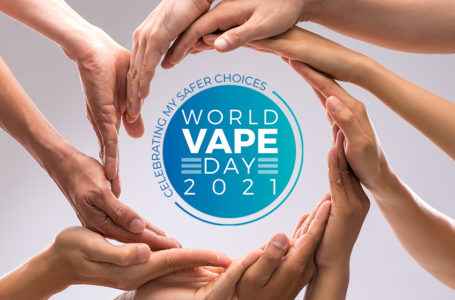Consumer advocates and tobacco harm reduction (THR) experts called on the World Health Organization (WHO) and governments in Asia and the Far East (A&FE) to allow smokers to choose safer alternatives, following the latest report that more than half of global smoking-related deaths occur in the region.

They made the statement during the launch of the latest Global State of Tobacco Harm Reduction (GSTHR) report held by public health agency Knowledge Action Change (KAC) and the Association of Vapers India (AVI).
Published by KAC and edited by Harry Shapiro, the regional report “Tobacco Harm Reduction: A Burning Issue for Asia and the Far East” noted that “over half of the world’s smokers who die every year, die in Asia and the Far East”.
It said that four million people in the region die prematurely as a result of smoking, representing over half of all global smoking-related deaths, despite the tobacco control strategies dictated by the World Health Organization (WHO) and well-funded organizations such as Bloomberg Philanthropies .
The report said there is little evidence that such tobacco control strategies are working, because most smokers in the region have low desire to quit. It said that while safer nicotine products [SNPs] can help smokers switch away from far more dangerous products, “an invidious combination of political expediency, linked to the pervasive nature of state-owned or state-involved tobacco companies and pressure on politicians and officials from western-funded anti-tobacco harm reduction NGOs, promoting bad science and propaganda, is resulting in increasingly harsh legislative responses.”
Reacting to the report during the launch, Nancy Loucas, Executive Coordinator of the Coalition of Asia Pacific Tobacco Harm Reduction Advocates (CAPHRA), said public health officials in the region have unfortunately waged a war on safer nicotine products and the concept of tobacco harm reduction.

“The biggest challenges facing tobacco harm reduction in Asia are not only government interest in tobacco manufacturing which is pretty huge in the region, but also the reach of philanthropic colonialism. That is, foreigners coming to countries and using private foundations or NGOs which they fund to help guide governments in developing policies,” said Loucas.
“These people do not want safer nicotine products that are available. They do not want the concept of tobacco harm reduction to be promoted or to be celebrated. This is because they serve their own personal economic agenda,” she said.
The report states most of the 1.1 billion smokers live in Asia and the Far East. “Including the range of regional combustible products as well as manufactured cigarettes, the A&FE region accounts for around 80 percent of combustible tobacco users worldwide,” it said.
The Global Burden of Disease (GBD) study estimates that smoking accounted for 7.1 million deaths in 2017, with an additional 1.2 million deaths attributed to second-hand smoking. Latest available data also indicate that more than 4 million people in the region die from smoking-related disease, with three quarters of these in China and India.
In place of tobacco cessation strategy, the report pushes for tobacco harm reduction which refers to a range of pragmatic policies, regulations and actions aimed at reducing health risks by providing safer nicotine products such as e-cigarettes, heated tobacco products and snus.
Samrat Chowdhery, director of Association of Vapers India (AVI) which co-hosted the event, and president of International Network of Nicotine Consumer Organizations (INNCO), a global consumer advocacy group comprising 40 national and regional bodies, said Asia and the Far East has nearly 750 million smokers and just 19 million vapers.
“The report makes a strong case for tobacco harm reduction strategies in the ongoing battle to reduce tobacco-related mortality and morbidity,” he said. “I hope there are government and industry efforts to make low-risk alternatives affordable to users in low-income groups.”
The report confirms that the market for safer nicotine products in A&FE is still quite under-developed compared to smoking. “The reasons for this include ever-tighter laws and regulations and the existence in some countries of state-owned, or state-involved tobacco companies, who are not averse to seeing disruptive and innovative products legislated or taxed out of existence,” it said.
The report adds that in most countries in the region where it is legal to sell, buy and use SNPs, they are nevertheless treated as tobacco products and are therefore subjected to public bans and prohibition of promotion as safer options.
Joaqui Gallardo of Philippine consumer advocacy group Vaper AKO, said anti-vaping foreign organizations are trying to shape the policy environment in the region.
“In my home country—the Philippines, for example, the World Health Organization (WHO) and anti-tobacco lobby groups such as Bloomberg Philanthropies exert tremendous influence on local policies that make it more difficult to promote THR as a public health strategy. This resulted in policies that actually discourage the switch from combustible cigarettes to less harmful alternatives such as vapes and heated tobacco products (HTPs). While we have laws that allow the use of SNPs, they are more restrictive than the regulation for traditional cigarettes,” said Gallardo.
Asa Saligupta, representative of ENDS Cigarette Smoke Thailand (ECST), stated there is a lot of misinformation and propaganda against vaping. “So we need to tell people how safe vaping is compared to smoking combustible cigarettes,” he said.
The report notes that vaping and HTPs emit substantially fewer toxins than conventional combustible tobacco products which means the potential health risks from smoking are dramatically reduced by switching away from cigarettes.
Samsul Kamal Arrifin, president on Malaysian Organization of Vape Entity (MOVE), expressed hope that health authorities will eventually recognize THR as a life-saving strategy.
“Our hope for tobacco harm reduction is that we can put in place consumer-friendly regulations for production, distribution and the use of THR products and for the authorities to see this as a life-saving initiative,” he said.




















2 Comments
This article misrepresents that the event was held with Caphra. As the event site (https://events.gsthr.org/) makes abundantly clear, the launch event was held in partnership with Association of Vapers India (AVI), a consumer advocacy group focused on ensuring India’s 270 million tobacco users can avail harm reduction avenues.
We have reached out to the authors to print a correction, but have not received any response so far.
Pratik Gupta
Director – AVI
[…] Tobacco harm reduction key […]